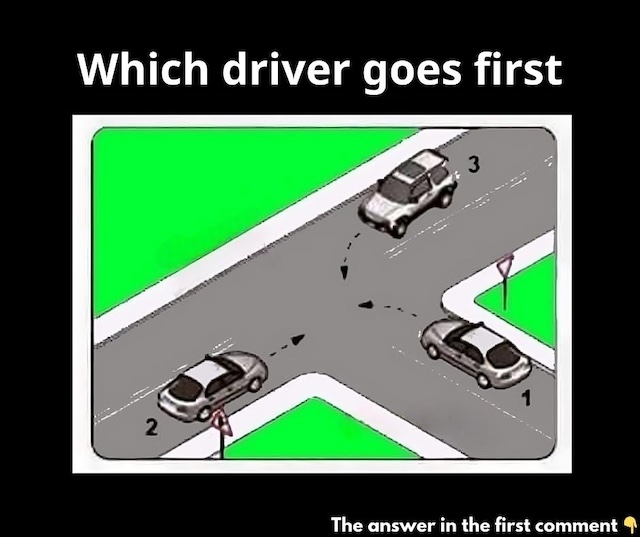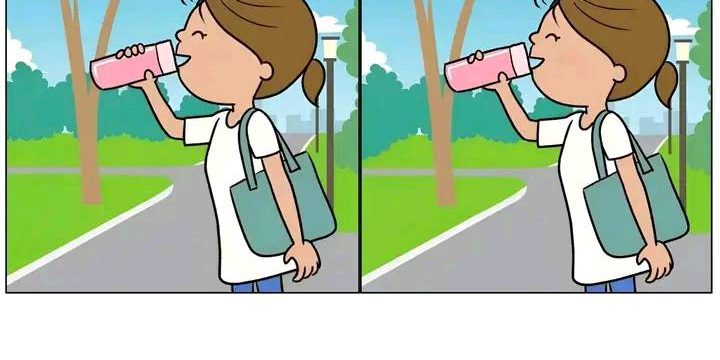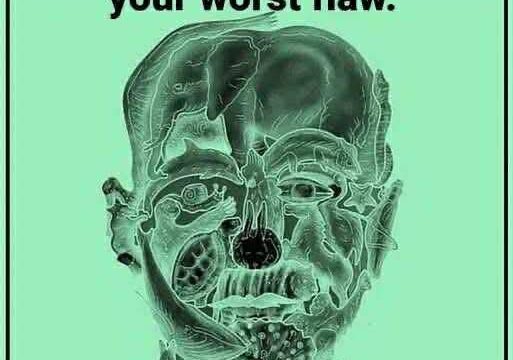How well do you know the rules of the road? Here’s a traffic riddle that only about 5% of people answer correctly on their first try, and it’s a perfect opportunity to test your knowledge and logical thinking. Imagine three cars approaching an intersection, and the question is deceptively simple: which car should go first?

At a glance, it might seem obvious, but if you miss just one small detail—like a yield sign or the right-hand rule—you could end up with the wrong answer. That’s what makes this riddle such a great brain teaser. It forces you to slow down, observe carefully, and apply real traffic laws. Many people jump to conclusions based on the cars’ positions alone, forgetting that traffic flow isn’t determined by guesswork—it’s determined by established right-of-way rules.
Let’s break it down together and see if you can figure out the correct sequence of who moves first, second, and last. To start, it’s important to identify what common mistakes most people make with this kind of puzzle. First, there’s the tendency to ignore traffic signs, focusing only on where the cars are positioned in relation to each other. Second, many people forget or misunderstand the right-hand rule, which states that when two drivers approach an uncontrolled intersection, the driver on the right has the right of way. Finally, there’s the classic mistake of rushing to answer, leading to skipped steps in reasoning. All of these errors can steer you away from the correct conclusion, which is why it’s important to walk through the problem one step at a time. Step one is to assess the traffic signs visible in the image. You’ll notice that Car 2 is on a priority road, while Cars 1 and 3 each face a triangular yield sign.
This detail is key. According to standard traffic regulations, any vehicle on a priority road has the right of way over vehicles that are required to yield. That makes it clear: Car 2 should go first. With that decision made, we now look at Cars 1 and 3, who are both waiting at yield signs. Since neither of them is on a priority road and both are required to yield, we apply the right-hand rule. Car 3 is to the right of Car 1, which means Car 3 has priority and should go next. With Cars 2 and 3 now out of the picture, that leaves only Car 1, which can now safely proceed through the intersection. So, to recap the proper driving order: Car 2 goes first because it’s on the priority road. Car 3 goes second because it has the right of way over Car 1 based on the right-hand rule.
Car 1 goes last, after yielding to both. Therefore, the correct order is 2 – 3 – 1. This riddle is a great reminder that even everyday situations—like approaching an intersection—require careful thought and attention to the rules. If you got it right, congratulations! You’re among a small percentage of people who took the time to evaluate the signs, apply the rules, and arrive at the correct answer. If you missed it, don’t feel bad—this is exactly the kind of challenge that helps sharpen your logic and understanding of traffic laws.

Plus, puzzles like this are more than just fun—they’re useful tools for training your brain and improving real-world decision-making. Try sharing this riddle with your friends or family members and see how they do. You might be surprised how many people rush to the wrong answer. And if you’re the one who explains it correctly, you’ll not only look smart but help others learn something valuable too. Keep challenging yourself with more puzzles like this to stay mentally sharp and confident behind the wheel. And remember, every traffic rule has a purpose—even the tricky ones that show up in brain teasers.





